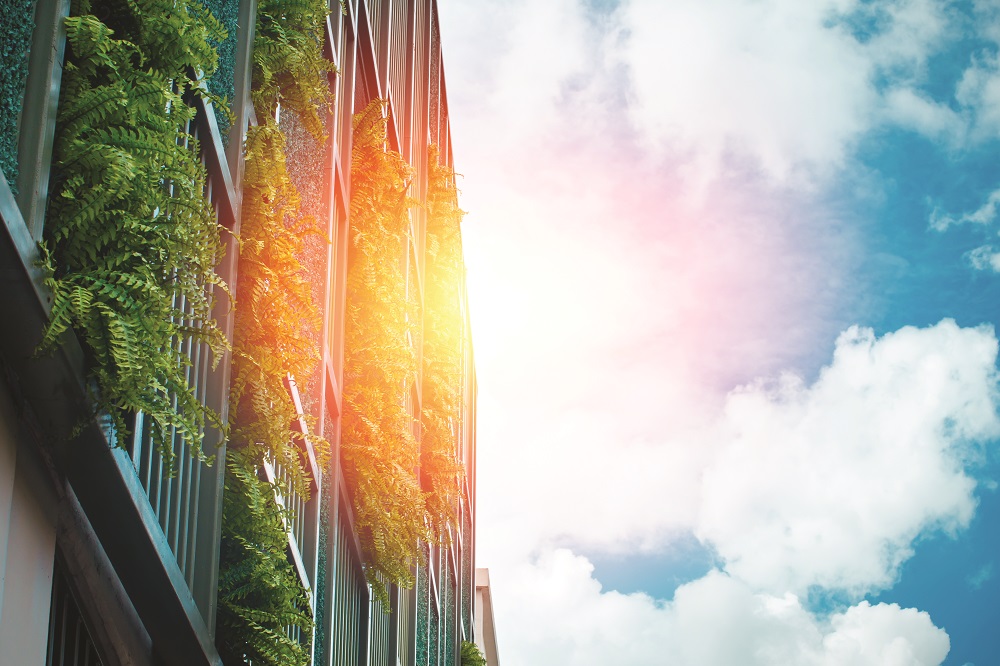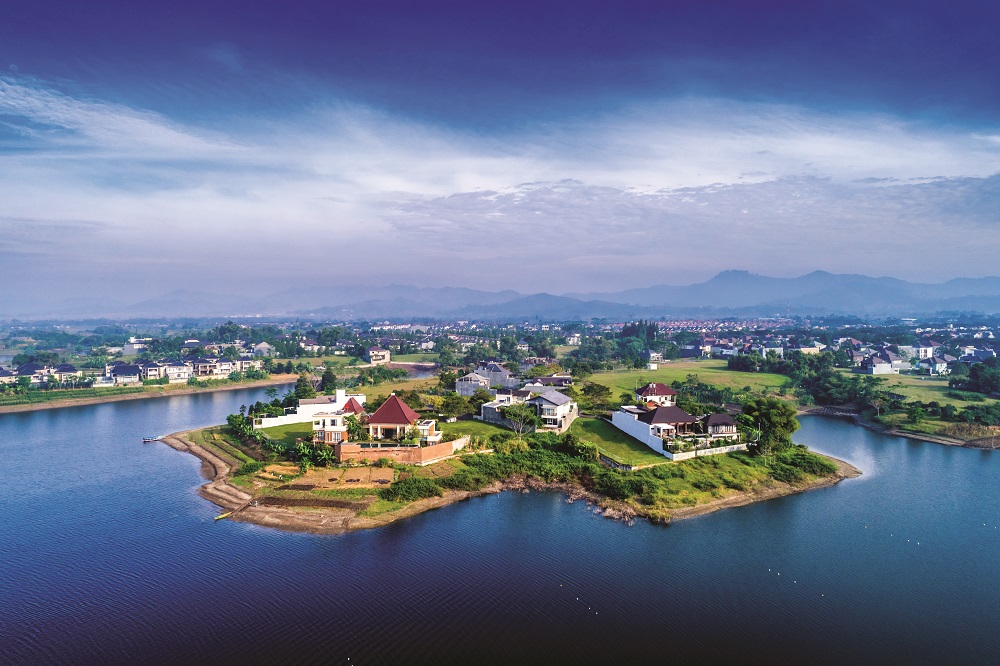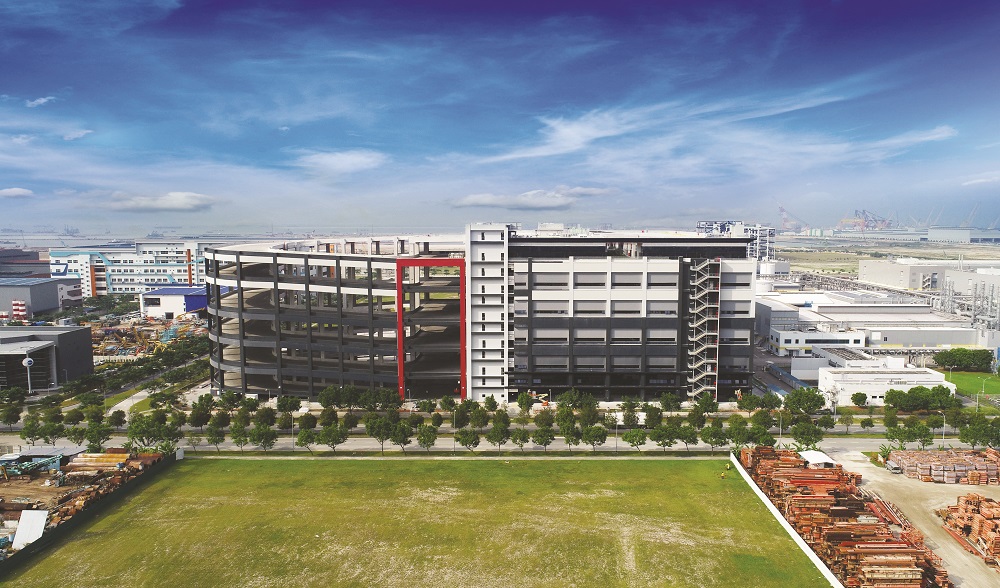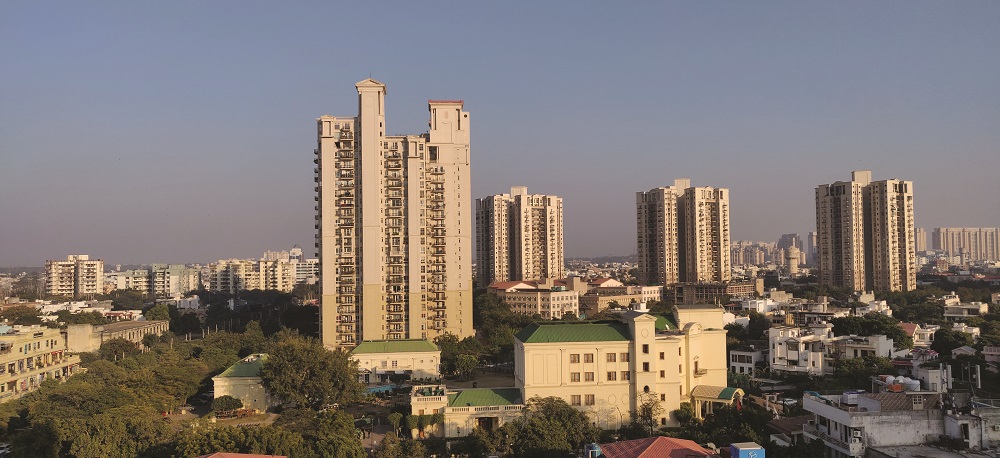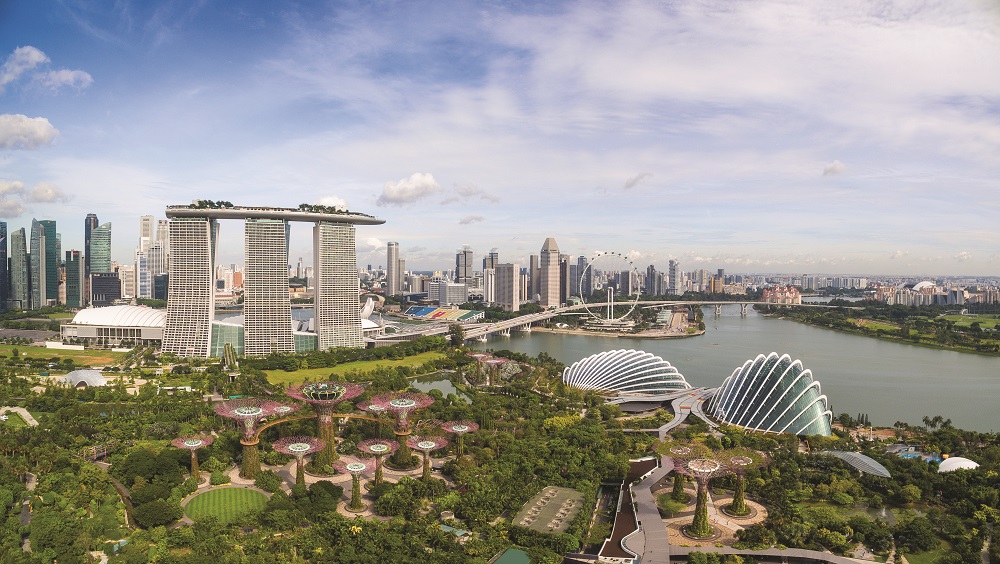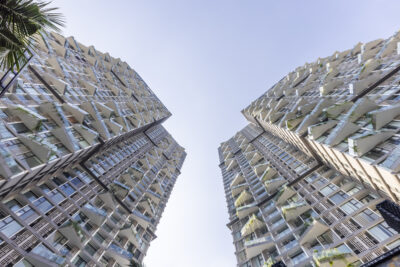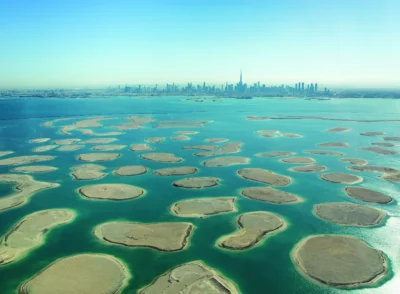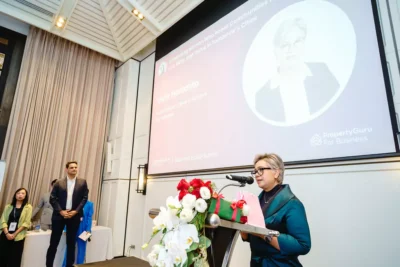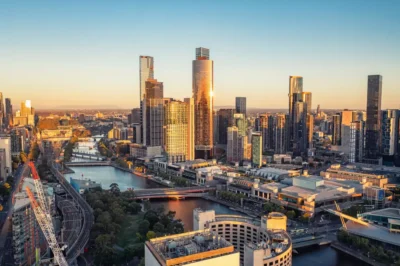Green-up time for Asia’s polluted cities
In Asia where 90 of the world’s most polluted cities are located, the implementation of green technologies and solutions by developing nations will make or break the continent’s environmental future
The construction industry has reached crisis point. According to the United Nations, the global real estate sector accounts for somewhere between 30 to 40 percent of the world’s carbon emissions. Meanwhile, the World Health Organization (WHO) estimates that 91 percent of the global population lives in areas with unsafe air pollution. It also reports that 4.2 million people die per year as a result of outdoor air pollution. WHO’s detailed map of ambient air pollution around the world targets Central and Southeast Asia as among the worst affected areas.
In reaction, this decade has seen a mood swing among governments around the world, as they wake up to the fact that action is needed to curb the emissions of an industry that will not police itself. The Paris Agreement of 2016 sets out a common cause for all 194 member states and the European Union to fight climate change, while the Addis Ababa Action Agenda, ratified by all 174 of the United Nations member states, puts in place a framework for financial and economic growth to align with social and environmental priorities.
Against this backdrop, Asian governments are putting in place substantive guidelines and goals for the construction industry, with several nations even setting the pace for environmental policy around the world.
While the rigorously plotted Leadership in Energy and Environmental Design (LEED) guidelines constitute the international standard for environmentally conscious design, Singapore’s Building and Construction Authority (BCA) has its own widely praised certification process. In place since 2005, the Green Mark (GM) scheme offers cash incentives to any developer who achieves a Gold standard or above for environmental building practices.
“Urban Redevelopment Authority land bid guidelines and various BCA assessments such as the Green Mark requirement promote and incentivise high green plot ratio development,” says Henry Woon, director of environmental design consultancy Atelier Ten’s Singapore office. “These are very effective in pushing developers to implement green spaces.”
One building to recently achieve GM’s highest status, Platinum, is the new Yang Kee Warehouse by LOGOS Property. The seven-storey site makes an estimated energy saving of 1.77 million kilowatt hours per year, according to the BCA’s assessment, and water savings of nearly 20,000 cubic metres. The building also incorporates an air-conditioning system designed to meet an efficiency of 0.73 kilowatts per ton of refrigeration (most systems operate at around 1.22 kW/RT), high-efficiency LED lighting, a sky garden, and an internal courtyard that, as well as creating native draft, also “enhances the wellbeing and surroundings.”
For developers, achieving GM Platinum status means that 50 percent of costs on the building’s energy “health check” will be borne by the BCA, while they will also gain a two percent increase in the gross floor area permitted over and above the development’s gross plot ratio.
Urban Redevelopment Authority land bid guidelines and various BCA assessments such as the Green Mark requirement promote and incentivise high green plot ratio development. These are very effective in pushing developers to implement green spaces
Alongside Hong Kong and Japan, Singapore is one of three Asian nations that place in the top 10 of the World Economic Forum’s Global Competitiveness Index (GCI), which ranks countries according to their productivity, infrastructure, and labour market, among other key civic categories. Not incidentally, nations that place highly in the GCI also tend to be the most proactive at pursuing green policies and initiatives.
“High-income countries, both in the region and around the world, are leading the way in pursuing green-growth initiatives,” writes Daniele Ponzi of the Asian Development Bank in his 2019 research paper, The Business of Greening: Policy Measures for Green Business Development in Asia.
While the paper concludes that environmental policies in developing Asian economies can be slow-moving, ineffective or simply unenforced, Ponzi also notes that “a number of middle- and low-income countries are challenging the ‘grow now, clean up later’ approach and have also made commitments to green growth.”
The Philippines ranks at just 56 on the GCI, far behind Indonesia at 36 and Thailand at 32, yet it has made recent strides to keep up with the most developed nations’ environmental construction commitments. “The Philippines has its own share of robust legislation focused on sustainability and protecting the environment,” says Jean Jacquelyn Nathania A. de Castro, CEO of ESCA Inc., a Philippines-based engineering and design consultancy.
“The Energy Efficiency and Conservation Act is awaiting the signature of the President to become law,” de Castro continues. “It seeks to standardise energy efficiency and conservation measures in the country by regulating the use of energy-efficient technologies in buildings. It provides for the development of a National and Local Energy Efficiency and Conservation Plan, which will include guidelines on energy-conserving design on buildings in the issuance of building permits.”
More: Meet the sustainability guru pushing Asia’s green building agenda
De Castro cites developers including The NET Group and Arthaland as companies that are leading the trend for green real estate in the Philippines, as well as Imperial Homes, which has provided solar-powered energy in the low-cost housing sector. “Going green is not only for those who can afford it,” she surmises.
While significant reductions in carbon emissions will only result from active and well-enforced legislation, the property market throughout Asia has at least seen a trend for self-governance towards “green design” as it relates to a project’s visual presence and immediate environment.
Landscaping, whether it be from vertical green walls, park-like common areas or integrated planting initiatives, plays an increasingly important role in modern real estate.
In markets like Indonesia where township development—large, self-contained new suburbs, usually on the outskirts of commercial centres—thrives, parks and green recreational space are a core component of any housing project. The result is developments like Kota Baru Parahyangan, a sprawling new city in West Java with a self-described “Garden City concept,” as well as the capacity to house 100,000 residents. Its 116-hectare footprint is expected to take 20 years to complete.
On a scale more suited to dense urban environments, Hong Kong’s Mount Pavilia is indicative of contemporary condominium “green” design trends. Serene white, curvaceous walls stand behind shrouds of foliage amid rolling, golf green-smooth lawns that have won it a fistful of awards for landscaping, including the HK Green Building Award 2016, FuturArc Green Leadership Award 2018, and Asia Property Awards 2018 Best Condo Development (Hong Kong).
“Hong Kong has a sophisticated and distinctive approach to landscaping supported by its local landscape institutes,” says Christian Dierckxsens, landscape design director at the Hong Kong-based Atkins Global architecture firm. “There are a wide range of constraints to be considered by the local landscape architect. These include green ratio percentages, preservation of existing trees or integrating a percentage of public realm as part of the development.”
However, Dierckxsens warns again conflating landscaping with environmental design. “Intelligent landscaping is very effective at reducing a project’s energy footprint, but it requires more than the random integration of green building measures. For example, a large tree within a building lobby is not necessarily contributing to the reduction of the building’s energy footprint,” he points out.
Low or even net-zero energy buildings—developments that produce the same amount of energy as they consume—are only possible by embracing the latest technologies. “With worsening consequences from climate change being felt even more today, these buildings will have to become the standard or the norm in the future,” says de Castro.
She outlines three measures the region needs to adopt if net-zero energy consumption is to become a reality: Building Information Modelling (BIM), Integrated Building Management Systems, and Integrated Project Delivery as the delivery method.
In practice since the 1980s (although not under the name “Building Information Modelling” until the early 2000s), BIM allows developers to digitally log and manage all of a building’s information models. Its capacity for energy management is vast. On top of providing dynamic models that allow for collaboration between designers, engineers, and constructors, BIMs can substantially lessen a building’s consumption of resources, whether through monitoring and controlling utilities or identifying and communicating maintenance faults, from water leaks to excessive energy consumption.
More: Green walls rise with Asia’s skyscrapers
Many of Asia’s most developed economies have long mandated BIM in all government-led developments. Singapore and Japan, for example, both integrated their BIM strategies in the early 2010s, in line with European markets like the U.K. and Germany. Others are now following suit. Since January 2018, the Government of Hong Kong has directed that all government projects over USD3.8 million must incorporate BIM, while Malaysia has set a target of 2020 for its stage 2 BIM development program in its 2016-2020 Construction Industry Transformation Program.
The proptech involved in successful BIM is at the forefront of green development practices, driven by a building’s capacity to collect data on itself.
“Buildings should be able to monitor key metrics for performance, safety, health, and wellbeing and provide feedback so that the building can respond to the needs of its tenants,” Chungha Cha, co-founder of Korea’s Re-Imagining Cities Foundation, a non-profit organization that aims to accelerate green real estate development with technological innovation. “If the buildings fall out of the required range of performance for energy, resources and health-and-wellbeing metrics, severe penalties should be paid.”
Currently, however, there are few—if any—developers in the region who fully embrace the potential of proptech to offset carbon emissions. How to make them? Through government policies, according to Cha. “A huge gap currently exists between the measures that developments are willing to introduce and those that are required to create genuinely zero-waste development,” he says.
While Asia continues to slowly adapt to leading international energy consumption standards like LEED and BREEAM, other parts of the world are proving that zero-energy development is possible. In California, hopes are high that the state will introduce 100,000 new zero-energy homes by 2020, setting an example for future development everywhere. In 2017, developer De Young Properties began construction of three communities near Fresno slated to be among the first net-zero energy homes in the state.
“We need to follow what California is doing by requiring all residential units to be net-zero energy,” says Cha. “We must drive down our GHG emissions emitted from buildings to battle pollution and climate change. Buildings must also have systems to approach zero water and zero waste.”
Meanwhile in Asia, the World Health Organization’s PM2.5 graphs tell a frightening story. All of the world’s 90 most polluted cities are located in the continent, according to statistics unveiled in March 2019. While China accounts for a vast portion of the list, it is joined by India, Pakistan and several Middle Eastern states as the worst PM2.5 offenders.
The adaptation of green technologies and solutions by developing nations will dictate the environmental future of the region. Positive legislation, both from economically rich and developing states, shows that the green movement is growing. But it will only gain momentum through consistent enforcement and strong political stance.
This article originally appeared in Issue No. 154 of PropertyGuru Property Report Magazine
Recommended
Dewan Architects’ Mohammed Adib leads with human-centred design and technological innovation in the Middle East and beyond
Mohammed Adib channels his childhood curiosity and dislike for design uniformity into his work at Dewan Architects + Engineers
UAE real estate shifts focus to sustainability and quality, revitalising iconic projects
The UAE has risen from its challenges to emerge as a more sustainable, quality-focused destination
Exploring A Life By Design’s maximalist approach to interior design
Andrea Savage is embracing the maximalist trend with bold and vibrant interior designs
Jakarta’s emerging innovation hub integrates tech and healthcare sectors
The Digital Hub in BSD City is being positioned as Indonesia’s counterpart to Silicon Valley

